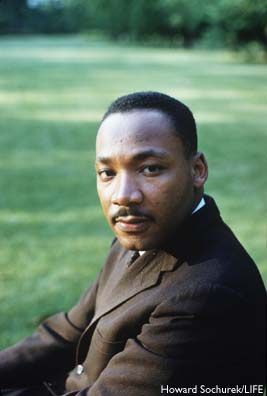Lesson Three - I Have a Dream
Introduction
Lesson Three - I Have a Dream
Duration - 2 blocks (2 x 80 min + homework)
"I have a dream that my four little children will one day live in a nation where they will not be judged by the colour of their skin but by the content of their character." - Martin Luther King, Jr.
Racial Discrimination in the United States
Despite efforts to end racial discrimination after the American Civil War, discriminatory practices such as racially segregated public facilities persisted in some parts of the United States, especially the South, through the first half of the twentieth century. During the late 1940s and early 1950s, lawyers for the National Association for the Advancement of Colored People (NAACP) brought several important cases before the American Supreme Court, and these efforts culminated in the Court's 1954 decision that racially segregated schools were unconstitutional. This landmark decision inspired a grass-roots movement that began with the Montgomery, Alabama, public bus boycott and grew into the civil rights movement. The movement soon found a charismatic leader in the person of an eloquent young Baptist preacher named Martin Luther King Jr.
Martin Luther King delivered his dramatic speech on August 28, 1963. It was the keynote speech at the March on Washington for Jobs and Freedom and was delivered from the steps of the Lincoln Memorial to about 250 000 people. The speech was broadcast on television and published in newspapers, cementing King's position as the leader of the American civil rights movement. This speech has become one of the most famous public addresses of the twentieth century. King was awarded the Nobel Peace Prize in 1964 for his philosophy of non-violent political resistance. He was assassinated on April 4, 1968.